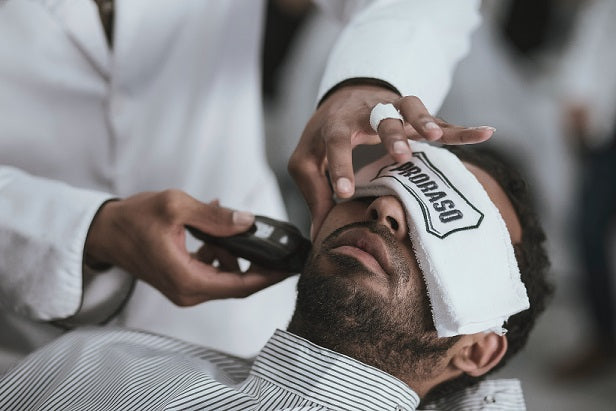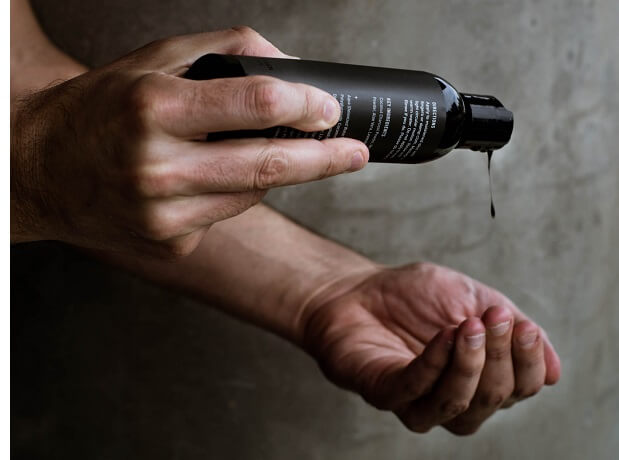Say Goodbye to Male Pattern Baldness: Proven Treatments

Male Pattern Baldness is a common condition that affects many men worldwide. It can be a source of embarrassment and frustration for those who experience it. However, there are effective solutions available that can help combat this issue and restore confidence. In this comprehensive guide, we will explore the causes of Male Pattern Baldness and discuss proven treatments to help you on your journey towards a fuller head of hair.
Understanding the Biological Causes of Male Pattern Baldness

At the core of Male Pattern Baldness, scientifically referred to as androgenetic alopecia, lies a complex interplay between genetic predisposition, hormonal influences, and the natural aging process. This condition primarily hinges on the sensitivity of hair follicles to dihydrotestosterone (DHT), a derivative of the male hormone testosterone. The presence of DHT is crucial, as it tends to shrink the hair follicles, drastically reducing their lifespan and consequently, the thickness and length of hair strands. The genetic blueprint inherited from family members dictates one's susceptibility to this condition, determining how hair follicles react to hormonal changes over time. As men age, these genetic and hormonal factors cumulatively contribute to the characteristic patterns of hair loss observed in Male Pattern Baldness, signifying the undeniable role of biology in the onset and progression of this widespread concern.
Recognizing the Early Signs and Stages of Hair Loss

Identifying the onset of Male Pattern Baldness early can significantly impact the effectiveness of treatment options. This condition usually begins with a noticeable thinning of hair at the temples, gradually evolving into a more pronounced receding hairline, often described as an "M" shape. Another hallmark sign is the thinning at the crown, which can progressively expand, leading to a bald spot. Observing these patterns of hair loss is crucial for early intervention. Additionally, an increase in hair shedding, changes in the hair's texture, or a more visible scalp when hair is parted are subtle indicators that shouldn't be ignored. Early detection and action can provide a wider range of treatment possibilities and better chances of slowing down or reversing the effects of Male Pattern Baldness. Being vigilant about these signs and consulting with a healthcare professional upon noticing them can set the foundation for a proactive approach to managing hair loss.
Non-Surgical Treatments for Male Pattern Baldness

For individuals seeking to mitigate the effects of Male Pattern Baldness without undergoing surgery, a range of non-invasive options is available. Minoxidil, one of the most accessible treatments, is a topical medication that enhances hair growth by revitalizing the hair follicles and extending their growth phase. It is typically applied twice daily and may yield visible results within several months of consistent use. On the other hand, finasteride, an oral prescription medication, targets the underlying hormonal causes of hair loss by inhibiting the action of DHT, thereby slowing the progression of baldness and in some cases, even promoting the regrowth of hair.
Aside from these widely recognized treatments, low-level laser therapy (LLLT) has emerged as a promising alternative, utilizing red light therapy to stimulate cellular activity in the hair follicles and encourage growth. This method can be particularly appealing for those seeking a drug-free approach.
Natural supplements and vitamins, such as biotin, vitamin D, and saw palmetto, have also garnered attention for their potential role in supporting hair health, though they may be more effective when used in conjunction with other treatments.
Ultimately, the choice of non-surgical treatment depends on personal preference, the extent of hair loss, and one’s overall health. Consulting with a healthcare provider can offer guidance tailored to an individual’s specific situation, helping to navigate the myriad of options and devise a strategic approach to managing Male Pattern Baldness effectively.
Surgical Solutions: Hair Transplants and Advanced Techniques

For individuals seeking a more definitive resolution to Male Pattern Baldness, hair transplant surgery stands out as a compelling choice. This sophisticated procedure involves relocating hair follicles from parts of the scalp less affected by balding, often the back or sides, to the areas where hair thinning or loss is most prominent. Two primary methodologies are prevalent in the field today: Follicular Unit Transplantation (FUT) and Follicular Unit Extraction (FUE). FUT, also known as strip surgery, involves removing a strip of skin with healthy hair follicles and transplanting these units to needed areas. Alternatively, FUE offers a less invasive approach by extracting individual hair follicles directly from the scalp without the need for a linear incision, thereby reducing recovery time and scarring. Robotic assistance has further enhanced the precision and efficiency of FUE procedures, enabling a higher degree of accuracy in follicle placement and an improved overall aesthetic outcome. Each technique has its advantages and considerations, and the choice between them often depends on the patient’s specific condition, goals, and the professional advice of their surgeon.
Coping Strategies and Emotional Support for Hair Loss

Facing the reality of Male Pattern Baldness often comes with a significant emotional burden. However, understanding that this journey does not have to be walked alone is crucial. Reaching out for support, whether it be through close connections like friends and family or professional help such as therapists, can provide much-needed comfort and reassurance. These conversations not only offer a space for emotional expression but also present an opportunity to explore personal feelings about hair loss in a safe and understanding environment.
Engagement with support groups, either in person or online, introduces a community aspect to coping strategies, connecting individuals to others who share similar experiences. These platforms facilitate the exchange of personal stories, tips, and encouragement, fostering a sense of belonging and mutual support. Embracing these resources can significantly alleviate the emotional weight of hair loss, offering perspectives that emphasize self-acceptance and the exploration of identity beyond physical appearance.
Additionally, focusing on aspects of personal health and well-being that can be controlled, such as nutrition, exercise, and mindfulness practices, can also contribute positively to coping with hair loss. Engaging in activities that boost overall self-esteem and focusing on personal strengths can help shift the narrative from loss to empowerment. By adopting a holistic approach to coping with Male Pattern Baldness, individuals can navigate the emotional landscape with resilience, finding pathways to confidence and acceptance along the way.



